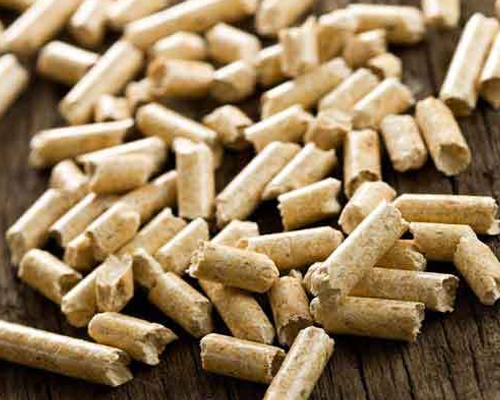Wood Pellets
Pellet fuels (or pellets) are biofuels made from compressed organic matter or biomass. Pellets can be made from any one of five general categories of biomass: industrial waste and co-products, food waste, agricultural residues, energy crops, and untreated lumber. Wood pellets are the most common type of pellet fuel and are generally made from compacted sawdust
They can be used as fuels for power generation, commercial or residential heating, and cooking. Pellets are extremely dense and can be produced with a low moisture content (below 10%) that allows them to be burned with a very high combustion efficiency.
Further, their regular geometry and small size allow automatic feeding with very fine calibration. They can be fed to a burner by auger feeding or by pneumatic conveying. Their high density also permits compact storage and transport over long distance. They can be conveniently blown from a tanker to a storage bunker or silo on a customer’s premises.
Add Advantages of Pellets
The advantages of pellets for combustion, as compared with unmodified wood waste:
- greater energy efficiency
- high calorific value – 17 MJ/kg
- low ash content ( up to 1 %)
- low water content ( 8 % – 10 %)
- reduction of the volume – low demand for storage space (650 kg/m3)
- fully automatic unattended operation and regulation
- production of low emission combustion
- acceptable price per unit of heat produced
- a full-featured substitute for other types of fuel
- a renewable source of energy for heating


